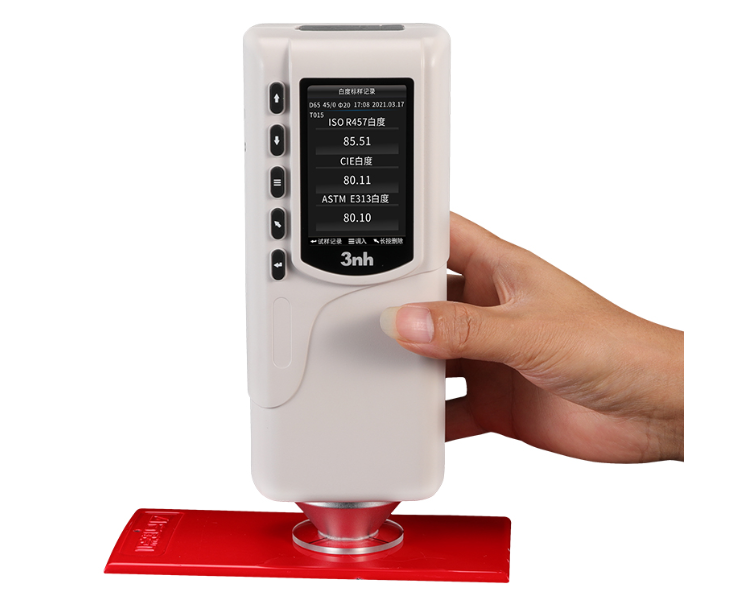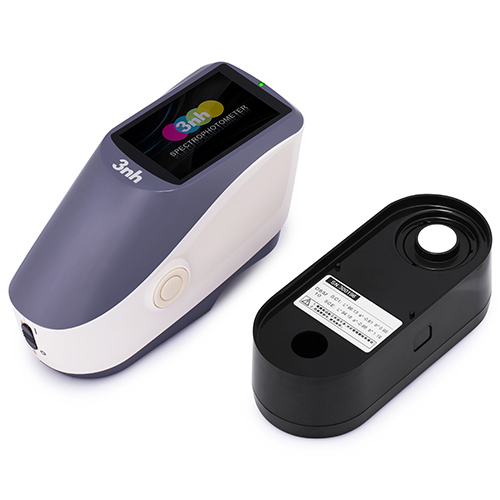Fluorescent Whitening Agent (FWA) is a chemical substance that absorbs ultraviolet light and emits blue light. It is mainly used to improve the whiteness and brightness of paper. This whitening effect is achieved through the principle of optical whitening, making the paper appear whiter and brighter to the naked eye.
Fluorescent brighteners are widely used in various types of paper, including office paper, printing paper and daily-use paper towels. This technology meets consumers' aesthetic needs for "high whiteness" and improves the performance of paper in reading and printing.
Effect of fluorescent brightener on paper whiteness
Optical brighteners can be applied at the wet end, the dry end, or both stages of the papermaking process. For internal brightness, they are added to the stock at the wet end. However, many paper manufacturers prefer to use optical brighteners at the dry end, such as at the size press or calender stack, as a surface coating. This method is more economical compared to the wet end because the chemicals are applied only to the outer surface fibers, rather than throughout the entire fiber content, while still effectively reflecting ultraviolet light. Some manufacturers opt for a combination approach, applying optical brighteners at both the wet and dry ends to achieve optimal results.Different types of paper have varying requirements for optical brighteners:
· Coated Paper: Coated paper has a surface layer, and optical brighteners are often added to the coating layer to enhance the brightness of the surface. This type of application is common for high-end products, such as advertisements and artwork.
· Uncoated Paper: Uncoated paper lacks a surface treatment layer, so optical brighteners directly act on the paper fibers to improve the overall brightness of the paper.
In detail, the effect of fluorescent brightener on paper whiteness is mainly reflected in the following two aspects:
· Inhibit yellowing of paper fibers: effectively counteract the yellowing of paper fibers and significantly improve the whiteness of paper fibers after chemical bleaching.
·Removal of yellow hues: Reduces the yellow appearance in rubber materials, fillers, adhesives and additives, and further improves the overall whiteness of white pigments.
Restrictions on fluorescent brighteners in paper in some standards
Restrictions on the use of fluorescent brighteners in paper mainly focus on long-term storage, food contact and environmental protection requirements. Different standards have different regulations based on application scenarios and potential risks.·ISO 9706:1994 (Standard for Long-term Storage Paper)
This standard stipulates that long-term storage paper should not contain fluorescent brighteners to ensure that the optical properties of the paper will not decrease or the paper will yellow due to the degradation of optical brighteners during storage.
This is because although fluorescent brighteners reflect higher brightness under ultraviolet light, their chemical properties are not stable. Long-term exposure to light and air may cause degradation, which in turn affects the durability and color stability of paper. In order to ensure the preservation performance of paper, it is required not to add fluorescent brighteners.
·EN 12281:2002 (Standard for Copy and Printing Paper)
This standard limit the optical properties of copy and printing paper. Although it does not completely prohibit fluorescent brighteners, it requires that their use should not affect the long-term performance and printability of the paper.
Since paper needs to withstand high heat during the copying and printing process, excessive use of fluorescent brighteners may cause the paper to turn yellow or its performance to deteriorate, thus affecting the final printing effect and service life.
·Food contact material standards (such as FDA and EU regulations ) US FDA standards :
For paper materials that come into direct contact with food, the use of fluorescent brighteners is strictly restricted. FDA requires that fluorescent brighteners must comply with food safety regulations to ensure that they do not migrate into food.
· EU regulations (EC 1935/2004) : stipulate that chemical components in food contact materials must not be harmful to human health. Paper using fluorescent brighteners must be tested to ensure that its chemical components will not migrate into food.
· Reason : Fluorescent whitening agents are essentially a class of organic compounds that may release harmful substances under high temperature or acid-base environments, posing potential risks to human health.
·Environmental protection related standards:
· FSC (Forest Stewardship Council Certification) : Promotes sustainable paper production and reduces the use of chemicals. Although FSC does not absolutely ban fluorescent brighteners, producers need to prove that their use will not have a significant impact on the environment.
· Blue Angel (Blue Angel Environmental Certification) : This standard requires that the use of fluorescent brighteners be avoided as much as possible during the production process to reduce pollution to the environment, especially in the process of waste paper recycling and regeneration, where brighteners may cause water pollution.
· Reason : Fluorescent whitening agents may generate waste and sewage during production and use, increasing the environmental burden. Therefore, many environmental certifications encourage the reduction or prohibition of such chemicals.
Method for detecting fluorescent brightener in paper
As one of the commonly used additives in the papermaking industry, fluorescent whitening agents have always been a hot topic for researchers at home and abroad. There are many methods for testing fluorescent whitening agents. The most common methods are fluorescent whiteness method, ultraviolet light irradiation method, fluorescence photometry, ultraviolet spectrophotometry, thin layer chromatography and high-performance liquid chromatography (HPLC). Here are some of them:
1. Whiteness method
The laboratory is used to test the whitening effect of fluorescent whitening agents on paper. The traditional method is to directly add fluorescent whitening agents to the pulp, then make paper, and use a whiteness meter to test the whiteness difference between the paper with and without fluorescent whitening agents to determine whether the fluorescent whitening agent meets the requirements for use. The whiteness method is mainly used in the papermaking process to test the whitening effect of fluorescent whitening agents, and is not suitable for qualitative and quantitative testing of fluorescent whitening agents in paper products.

2. Ultraviolet light irradiation method
This method uses the characteristic of fluorescent brighteners that they can absorb ultraviolet light and convert it into blue or purple visible light. Ultraviolet lamps (254 nm and 365 nm) are used to irradiate paper products, and the area of blue or purple areas in the paper products is observed to determine the use of fluorescent brighteners in paper products.
The ultraviolet lamp method can quickly detect whether paper products contain fluorescent brighteners. It is used by quality supervision departments to monitor the quality of paper products. Using a 3nh TILO standard light source color matching light box, the UV light source can be turned on quickly to detect fluorescence.
3. Fluorescence spectrophotometry
After being excited by ultraviolet light, fluorescent whitening agents can emit fluorescence with a longer wavelength than the excitation wavelength. Fluorescence spectrophotometry uses this principle to conduct quantitative analysis of fluorescent whitening agents.
Specific steps: (1) prepare a series of standard solutions; (2) measure the fluorescence intensity of the series of standard solutions at a suitable excitation wavelength and draw a standard curve; (3) measure the fluorescence intensity of the sample solution within the linear range; (4) calculate the concentration of the fluorescent brightener based on the standard curve and fluorescence intensity.
3nh spectrophotometer has high-precision measurement function, integrating UV light source and whiteness detection in one, easy to operate, accurate results, and can be selected as portable or desktop to adapt to various application scenarios.

Contact us to get the product that suits you best!








 0086 18165740359
0086 18165740359 Skype Online
Skype Online